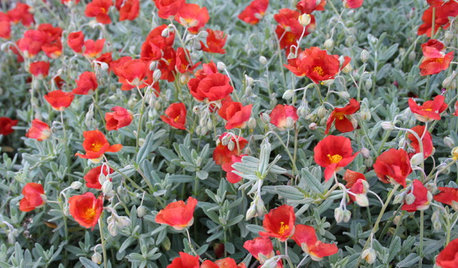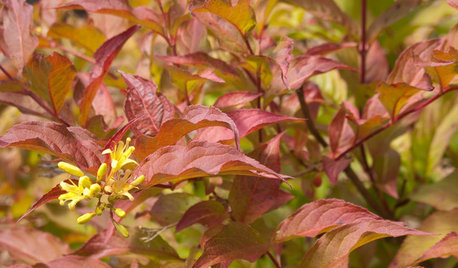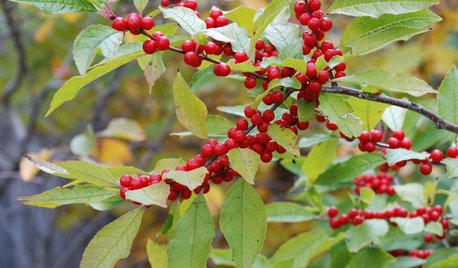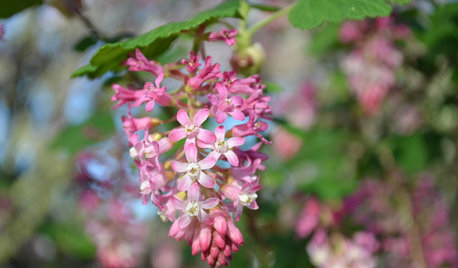berry bushes on a hot sunny slope
lizzyvann
18 years ago
Related Stories

GARDENING GUIDES6 Plants That Beat Butterfly Bush for the Wildlife Draw
It's invasive, a nonnative and a poor insect magnet. Check out these better alternatives to butterfly bush in the garden
Full Story
GARDENING GUIDESGreat Design Plant: Sunrose Dazzles on Dry Slopes
Abundant blooms and attractive foliage make this plant a welcome sight in sunny, well-drained spots
Full Story
GARDENING GUIDESGreat Design Plant: Northern Bush Honeysuckle, a Bronze Beauty
It helps control erosion and takes sun or shade. The butterflies love it. But the best part of this shrub may be the vivid foliage
Full Story
GARDENING GUIDESYes, You Can Grow an Edible Garden on a Hot, Dry Site
Difficult garden spots don’t need to deter you from planting trees, herbs and other delicious food plants
Full Story
GARDENING GUIDESYes, You Can Grow Food in a Shady Yard
Your shady garden doesn’t have to be forever barren. Berries, herbs and other shade-loving plants can produce a delicious bounty
Full Story
FARM YOUR YARDHouzz Call: Home Farmers, Show Us Your Edible Gardens
We want to see where your tomatoes, summer squashes and beautiful berries are growing this summer
Full Story
EDIBLE GARDENSHow to Grow Your Own Sweet Summer Crops
This guide will help any gardener get started on growing the freshest warm-season veggies and berries for summer
Full Story
GARDENING GUIDESGreat Design Plant: Winterberry Rouses Frosty Gardens
Energize dormant winter landscapes with this shrub's brilliant berries — and do right by hungry birds too
Full Story
GARDENING GUIDESGreat Design Plant: Feed Wildlife With Flowering Currant
Blossoms and berries make this plant irresistible to birds, bees and other critters — and a treat for the eyes too
Full Story
GARDENING GUIDESGreat Design Plant: Snowberry Pleases Year-Round
Bright spring foliage, pretty summer flowers, white berries in winter ... Symphoricarpos albus is a sight to behold in every season
Full StoryMore Discussions






woodlandpixie
lizzyvannOriginal Author
Related Professionals
Carlisle Landscape Architects & Landscape Designers · Derry Landscape Architects & Landscape Designers · Holly Springs Landscape Architects & Landscape Designers · Ashburn Landscape Architects & Landscape Designers · Bell Gardens Landscape Contractors · Bowie Landscape Contractors · Cambridge Landscape Contractors · Galveston Landscape Contractors · Hayden Landscape Contractors · Milford Mill Landscape Contractors · North Haven Landscape Contractors · Saint Paul Landscape Contractors · North Aurora Landscape Contractors · Oceanside Driveway Installation & Maintenance · Rancho Cordova Swimming Pool Builderswoodlandpixie
lizzyvannOriginal Author
woodlandpixie